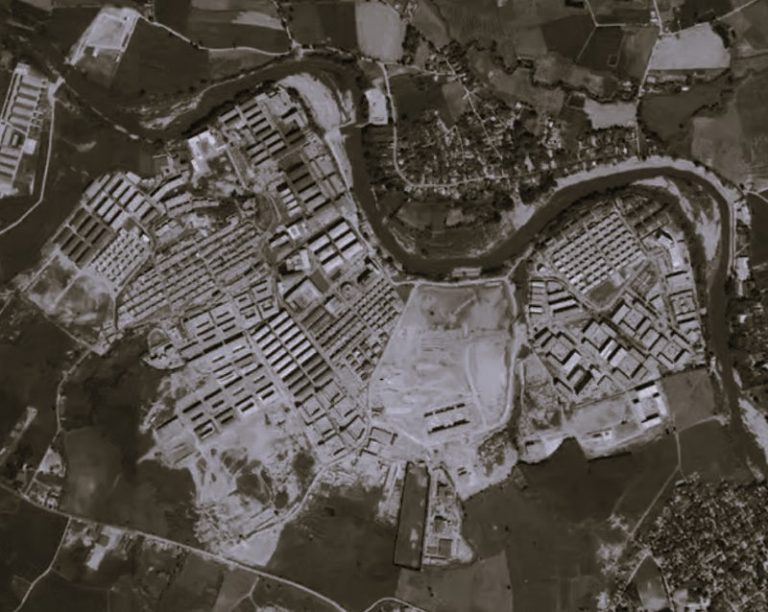

By Dr. Emma-Jayne Graham
Senior Lecturer in Classical Studies
The Open University
In 1988 Mark Golden set out to find what he considered the “correct answer” to a direct question: “Did the ancients care when their children died?” Drawing on cross-cultural parallels his conclusion was perhaps unsurprising: “we should assume that the ancients cared when their children died unless there is some compelling reason to doubt it” (Golden 1988, 160). Nevertheless, the debate surrounding Greek and Roman attitudes towards the very young remains a live one, especially now that attention has moved away from parental responses to high pre-modern mortality rates to crystallize around the emotive topic of intentional infant death: infanticide.
The question of whether Greeks and Romans were morally indifferent to infanticide has been batted back and forth for decades, but a series of recent publications have each sought to provide a final—albeit very different—word on the subject. On one side of the debate can be found research led by the osteoarchaeologist Simon Mays. In their latest article Mays and his colleagues draw upon DNA evidence from skeletal remains from Hambleden villa in southern England to assert that infanticide was not, as previously thought, a selective process, concluding that there is “no evidence to support the notion that manipulation of the sex ratio was an important motivation for infanticide in Roman Britain” (Hassan et al. 2014, 197). Despite their critique of the traditional assumption that newborn girls were unwanted and therefore killed more frequently than boys, the authors accept unquestioningly that infanticide was a widespread reality across the Roman empire.
A number of direct challenges have been made to this argument by, amongst others, osteoarchaeologist Rebecca Gowland and archaeologist Martin Millett who refute arguments that infanticide is the only way to explain the under-representation of infants within archaeological cemetery communities. Although abandonment of babies (exposure) may have been common, they argue that the archaeological evidence from Roman-period sites does not support a case for the intentional killing of newborn infants as a “normal” event (Gowland, Chamberlain, and Redfern 2014). Moreover, they have concluded most recently that analysis of the remains of infants who died at around the time of birth indicate expected patterns of natural deaths, with their bodies subsequently “afforded burial according to social norms” (Millett and Gowland 2015, 187). Although the complexities of these norms require further investigation, this is a conclusion which the authors observe “disposes once and for all with the suggestion that infanticide was the norm in Roman Britain” (Millett and Gowland 2015, 187).
The broad debate outlined above strikes a chord for those of us who work on contexts related to both Roman burial practices and ancient votive religion—a useful reminder of how the assumptions that we impose upon our evidence can prompt us to tell quite different stories. Evidence for the burial of infants is undoubtedly scarce; they are under-represented even in large, well-excavated cemeteries either as the result of taphonomic factors, variable disposal practices involving burial in areas away from the adult community, or mortuary rites that render them difficult to identify. Iconographic evidence for infant funerals is absent and textual, epigraphic, and archaeological evidence for the treatment of infants in death has only recently been scrutinised critically. On the other hand, evidence from sanctuaries in Roman Italy and other parts of the empire presents a contrasting picture of infant care and very deep concerns about conception, pregnancy, childbirth and the well-being of newborn infants (Figure 1). In Italy, ex-votos in the form of terracotta (sometimes bronze) objects dedicated to the divine between the fourth and first century bce attest to a range of religious activities built around ensuring the protection of pregnant mothers and neonates. These objects suggest that divine assistance was sought regularly in order to ensure the health of an expectant or new mother, as well as to boost their fertility and chances of a successful birth. Material remnants of thanks offerings, left at shrines and sanctuaries upon the completion of a successful vow associated with these concerns, include models representing wombs (sometimes containing clay pellets which may represent embryos or have an apotropaic function when shaken), breasts (associated with the successful feeding of infants by mothers or wet nurses), nursing figures (kourotrophoi; Figure 2) and, more rarely, pregnant torsos.

Models depicting (sometimes life-sized) infants wrapped from chin to toe in swaddling clothes are also familiar dedications (Figure 3). Interpretations of these figures have ranged from concerns about a woman’s fertility (i.e. a request or thank offering for pregnancy or successful childbirth) and the health of babies and older children who had recovered from a period of illness, to the celebration of a discrete stage of the life-course when the swaddling clothes were removed and a baby was “released” into the social and religious world (Graham 2014). Regardless of how these objects are interpreted, their presence in religious contexts is indicative of pervasive concerns about, and an interest in actively celebrating, the earliest stage of life. Fertility cult, however loosely and often unhelpfully it is sometimes defined, has long been an accepted element of ancient religious practice, and along with it comes the acknowledgement that ancient couples not only hoped for children but were deeply worried about the dangers of childbirth for both mother and baby. The prospect of infanticide simply does not appear in scholarship related to votive cult. Instead, it is accepted that ancient people desperately craved children, wanted them to survive once they had arrived and expressed these hopes and fears through the dedication of votive objects. With this in mind it seems almost inconceivable that, at the same time, there could exist anything that could ever be described as so-called “normal infanticide.”

The evidence provided by religious objects for attitudes towards the beginnings of life tells quite a different story from traditional approaches which have emphasised infant death, in part because researchers begin with different assumptions. However, when votive offerings are placed alongside Millett and Gowland’s (2015, 187) argument that mortuary evidence points towards the “entrenching of deceased infants firmly within the social sphere of the living,” the implication seems to be that we should begin to make use of a greater range of evidence when thinking about attitudes towards children, combining our questions about the causes of infant death with those about the active steps taken by parents to prevent it.
References
- Golden, Mark. 1988. “Did the Ancients Care When Their Children Died?” Greece and Rome 35 (2): 152–163.10.1017/S0017383500033064
- Gowland, Rebecca, Andrew Chamberlain, and Rebecca C. Redfern. 2014. “On the Brink of Being: Re-evaluating Infanticide and Infant Burial in Roman Britain”. In Infant Health and Death in Roman Italy and beyond, edited by Maureen Carroll and Emma-Jayne Graham, 69–87. Ann Arbor, MI: Journal of Roman Archaeology Supplementary Series 96.
- Graham, Emma-Jayne. 2014. “Infant Votives and Swaddling in Hellenistic Italy”. In Infant Health and Death in Roman Italy and Beyond, edited by Maureen Carroll and Emma-Jayne Graham, 23–46. Ann Arbor, MI: Journal of Roman Archaeology Supplementary Series 96.
- Hassan, Naglaa Abu-Mandil, Keri A. Brown, Jill Eyers, Terence A. Brown, and Simon Mays. 2014. “Ancient DNA Study of the Remains of Putative Infanticide Victims from the Yewden Roman Villa Site at Hambelden, England.” Journal of Archaeological Science 43: 192–197.10.1016/j.jas.2013.12.017.
- Millett, Martin, and Rebecca Gowland. 2015. “Infant and Child Burial Rites in Roman Britain: A Study from East Yorkshire.” Britannia 46: 171–189.
Originally published by Material Religion: The Journal of Objects, Art and Belief, 12:2 (2016, 251-254), under the terms of a Creative Commons Attribution-NonCommercial-NoDerivatives 4.0 International license.







